After-Hours Tour of the Fraunces Tavern Museum: "Path to Liberty"
Explore a new exhibit inside the oldest building in Manhattan, a witness to history throughout the Revolutionary War Era!


The walking tour that Untapped readers were given of Forest Hills, Queens, on a sunny Saturday afternoon was not of the Forest Hills that is. We were shown the Forest Hills that was; the Forest Hills that might have been; and perhaps, if we’re lucky, the Forest Hills that could still be. And there couldn’t have been a better person to help us uncover the neighborhood’s past than Michael Perlman, chair of the Rego-Forest Preservation Council.
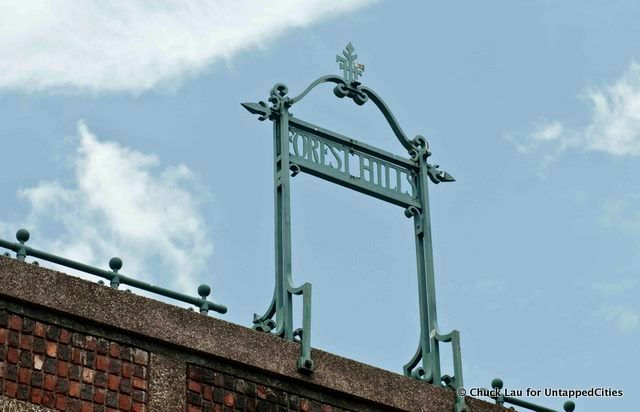
A quaint, unsuspecting neighborhood at first glance, Forest Hills is an area steeped in urban history… if you know where to look. It was planned as a garden community in the early 20th century, akin to those popular in England. Unfortunately, however, it’s becoming increasingly difficult to find the rich history that once displayed itself so prominently in this beautiful neighborhood. Throughout the neighborhood, the story is the same: the drug store that was once a magnificent cinema, or the grocery store that was once a bright, bustling theatre. It seems everything you see in Forest Hills was once something else.
We came to Forest Hills intent on seeing the decaying, abandoned Forest Hills tennis stadium we’d heard so much about. Before we even had a chance to ask Michael if we could see it right away, however, he had us walking toward Ridgewood Savings Bank. It seemed he had other plans for us. The bank is one of the few historical sites that remains what it always was… a bank. Inside, you’ll still find the old, copper colored teller booths and stained glass windows that you would have found on its grand opening day. It’s one of the few living testaments to Forest Hill’s desire to preserve fully and completely.
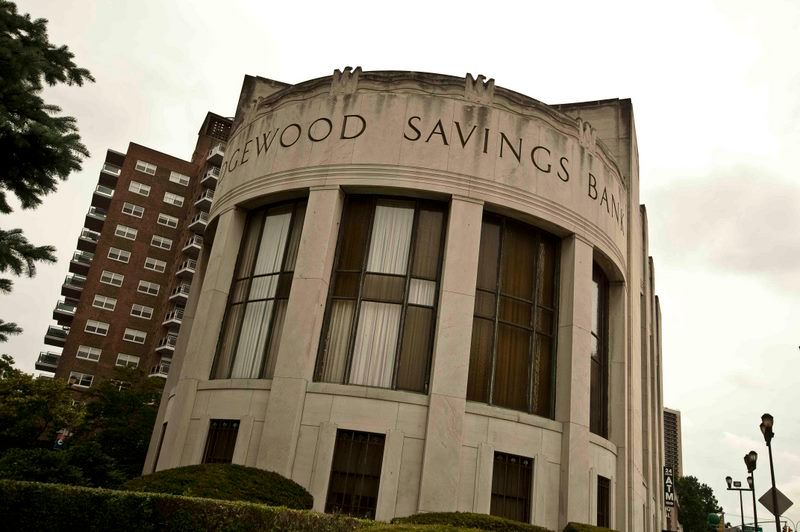
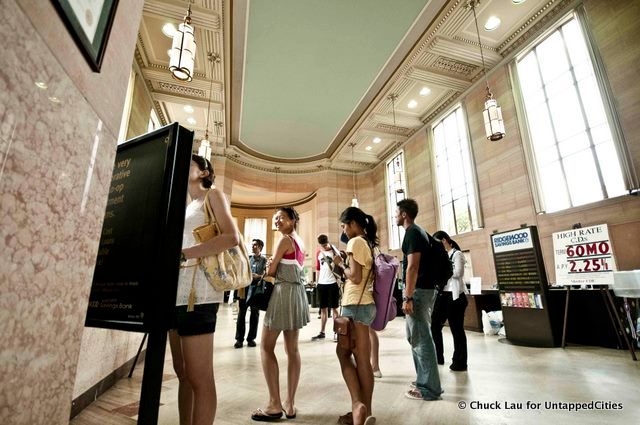 The preserved interior of Ridgewood Savings Bank
The preserved interior of Ridgewood Savings Bank
The rest of the town, for the most part, was not so lucky. The United Artist’s Theatre, we were told, was once a cinema house with beautifully ornate archways and tall cathedral-like ceilings. The building quite obviously remains a theatre, but the inside bears little resemblance to what Michael tells us it once was. Much of the original ceiling has been covered by cheap, modern material common in some of the more ordinary theaters you’ll find around the city. The spiral staircases inside are the only remaining evidence that this once was a magnificent place.
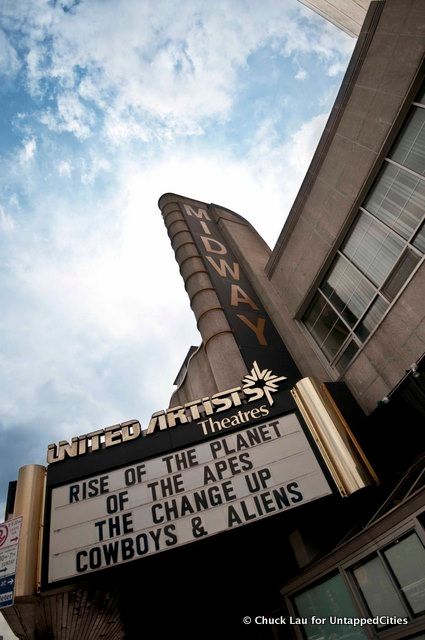
As Michael continued to walk us around the neighborhood, some of the transformations were a bit more obvious. This Duane Reade/Staples combo has maintained much of the original exterior of this historic building, once a cinema screen long before United Artist’s, in the 1920’s. The inside, which once sported a marble staircase, was gutted.
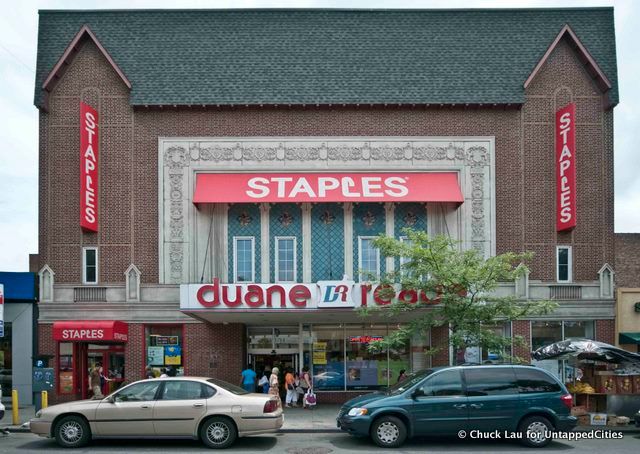 Theater turned Staples/Duane Reade
Theater turned Staples/Duane Reade
Imagine for a moment that you’re living in 1920, walking into a theater full of young families thankful to be able to watch a war on screen instead of fighting one, a theater whose goal was not to simply play movies, but impress people. Now, come back to reality and gaze at what it’s become, a major cookie cutter drug store chain that never puts bottled water on sale. Yep, we’re just as angry as you are. The more we saw, the more we appreciated Michael’s strong passion for preservation.
It wasn’t until we reached the Forest Hills Tennis Stadium, though, that we realized what an important cause Michael Perlman is giving all of himself to. Sealed off from the public and left to decay without a second glance, the stadium, home to the first US Open, is a dying giant. It’s hard to understand why a city would let such an impressive structure with so much history within its stone walls crumble slowly to the ground. “Imagine what this place could be if they had the funding to fix it up,” one of us quipped.
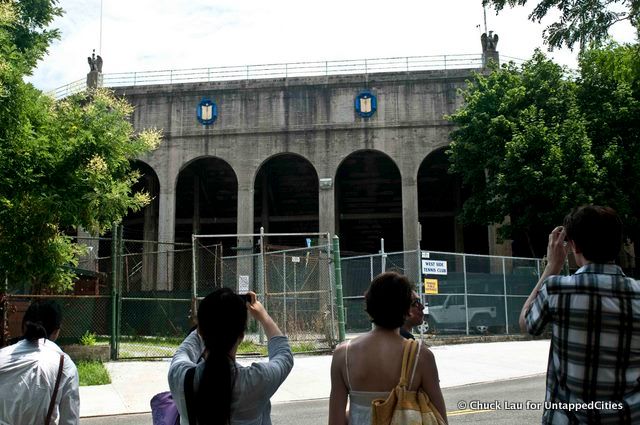 Photographing the old US Open stadium
Photographing the old US Open stadium
For Michael, this is a battle he can’t help but fight. He believes so strongly that Forest Hills can be so much more… a place for families to come on weekends to play, a place for young people to see a concert, a place for historians to come to appreciate New York’s once celebrated affinity for conservation. While it may seem like he’s losing the battle more often than not, he’ll never admit it, and he’ll never give up. It’s easy to imagine that if we had more people like Michael, movers and shakers who would give everything to preserve the places they call home, we might finally have 5 boroughs filled to the brim with places the whole world would be excited to explore.
If you feel as strongly as Michael does (and we do) about preserving the history in Forest Hills, please sign his petition to save the former US Open tennis stadium, check out his Facebook page and read his blog.
Subscribe to our newsletter